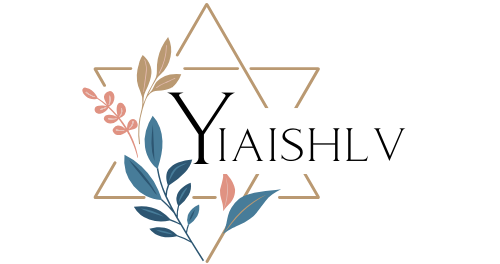Religion is a fascinating topic that interests both experts and regular people. It involves a wide variety of beliefs and traditions that impact how people live, cultures, and what they consider right or wrong.
One crucial aspect of many religions is their sacred writings. These texts are highly respected and followed by believers as they go through life.
In this blog post, we’ll delve into two significant religious texts, the Torah and the Old Testament. We’ll explore where they come from, how they differ, and their roles in Judaism and Christianity.
What is the Torah?
The Torah’s style is highly poetic, using repetition and parallelism to reinforce its teachings. It frequently employs symbolism, stories, and metaphors to convey its lessons and offers practical advice for leading a moral life.
Throughout history, the interpretation of the Torah has sparked controversies, leading to various viewpoints. Nevertheless, it remains a vital and relevant text for Jews globally, continuously inspiring and guiding them in their faith and actions.
What is the Old Testament?

The Old Testament, forming the first part of the Christian Bible, holds significant importance in Judaism as well. It consists of 39 books that trace God’s relationship with the Israelites, from their creation to the Babylonian exile. Moreover, it contains prophecies about the Messiah, whom Christians identify as Jesus Christ.
Written in Hebrew, Aramaic, and Greek, the Old Testament includes the Pentateuch, the first five books traditionally ascribed to Moses and other books attributed to various authors like Joshua, Judges, Samuel, Kings, Isaiah, Jeremiah, Ezekiel, and the twelve Minor Prophets.
As a complex and profound text, the Old Testament has been subject to various interpretations throughout history. It serves as a source of inspiration and guidance for adherents of both Judaism and Christianity worldwide.
Key themes in the Old Testament encompass the covenant between God and the Israelites, the significance of adhering to God’s law, the pursuit of social justice, the value of family and community, and the hope for a better future.
The Old Testament incorporates stories, poems, and songs and offers abundant wisdom on topics ranging from ethics and politics to spirituality. It has been translated into numerous languages and is widely read across the globe.
While the Old Testament remains an essential source of inspiration, guidance, and hope for Jews and Christians, it has also sparked controversy and diverse interpretations. Despite its complexity, it continues to be studied and revered by people today.
In the Christian context, various denominations uphold different views on the Old Testament. While most accept the moral laws within it, some denominations, such as the Quakers and Unitarians, do not consider it a divinely inspired text, focusing solely on the New Testament as the source of divine revelation.
The Old Testament’s influence extends beyond Christianity, as elements of its stories and teachings have been integrated into the scriptures of other religions, including Islam and Baha’i.
The Difference Between the Torah and the Old Testament
The Torah and the Old Testament are fundamental religious texts, each belonging to different traditions. The Torah, comprising the initial five books of the Hebrew Bible, holds the utmost importance in Judaism.
In contrast, the Old Testament is the first section of the Christian Bible, encompassing the Torah and additional books. The primary distinction lies in their content: the Torah is solely composed of the first five books of the Hebrew Bible, while the Old Testament contains a more extensive collection of books.
| Characteristic | Torah | Old Testament |
|---|---|---|
| Number of books | 5 | 39 |
| Language | Hebrew | Hebrew, Aramaic, and Greek |
| Authorship | Moses | Multiple authors |
| Content | Creation, history of Israelites, laws | Creation, history of Israelites, laws, prophecies, poetry, wisdom literature |
| Significance | A most important text in Judaism | The first part of the Christian Bible |
The term “Hebrew Bible” is used by Jews to refer to their entire canon of sacred scripture, also known as the Tanakh. The Tanakh is an acronym derived from the names of its three sections: Torah (Teachings), Nevi’im (Prophets), and Ketuvim (Writings).
This collection, which is distinct from the Christian Old Testament, includes not only the Torah but also prophetic books and other religious writings, all written in Hebrew. The “Old Testament,” on the other hand, is a term employed by Christians to describe the first portion of their Bible.
This includes not only the Jewish Tanakh but also additional texts recognized as canonical by various Christian denominations. Some of these additional texts were written in Greek and are included in the Septuagint, an ancient Greek translation of the Hebrew Bible, but are not recognized as part of the canon by Jewish communities.
This forms part of the Apocrypha or Deuterocanonical books in the Christian tradition.
FAQ
Are there different versions of the Torah and the Old Testament?
Yes, there are different versions and translations of both the Torah and the Old Testament. These can vary based on religious tradition, language, and interpretation.
For example, the Jewish, Protestant, and Catholic versions of the Old Testament include different books and may arrange in different order.
How are the Torah and the Old Testament used in religious practice?
In Judaism, the Torah is read publicly during synagogue services, with the entire cycle of readings completed over one year. In Christianity, passages from the Old Testament form part of the scripture readings in church services.
Both texts are also studied privately and in religious education settings for their spiritual, moral, and theological teachings.
Do different interpretations of the Torah and the Old Testament exist?
Yes, both the Torah and the Old Testament have been interpreted in many different ways throughout history. These interpretations can vary based on factors such as religious tradition, historical context, and personal belief.
Are there study guides available for the Torah and the Old Testament?
Yes, there are many study guides available for both the Torah and the Old Testament. These can provide historical context, commentary, interpretation, and discussion questions.
They can be found in bookstores, libraries, and online.
Conclusion
Holy scriptures, often regarded as the divine voice or the word of God, serve as the lifeblood of faith for millions of religious adherents worldwide. These sacred texts not only guide individuals in their spiritual journey but also offer a moral compass for their daily lives.
The Torah and the Old Testament are prime examples of such scriptures, holding unparalleled importance for Jews and Christians, respectively. A comparative analysis of these scriptures can broaden our understanding of these faiths, promoting interfaith dialogue and fostering mutual respect.

